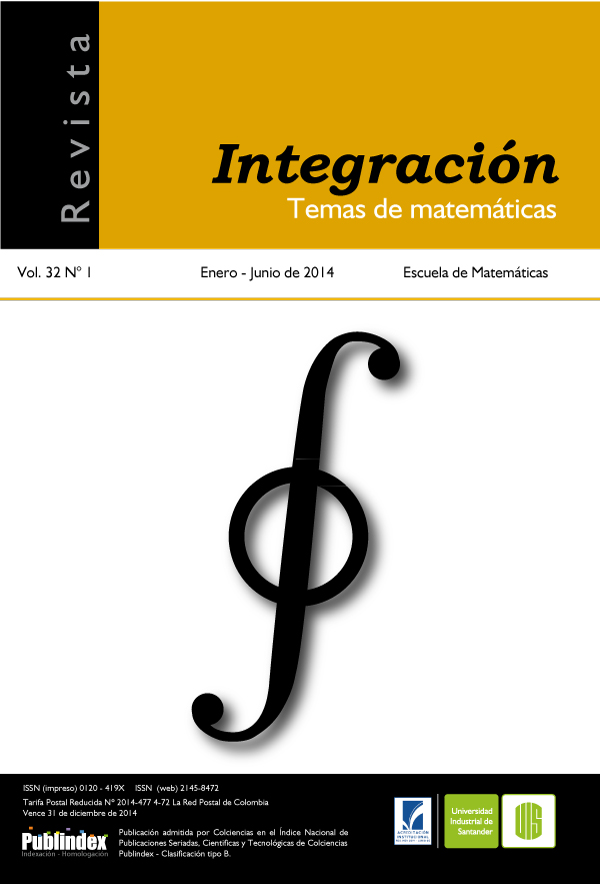An acceleration technique for the Gauss-Seidel method applied to symmetric linear systems
Published 2014-05-22
Keywords
- Preconditioning,
- Gauss-Seidel method,
- regular splitting.
How to Cite
Abstract
A preconditioning technique to improve the convergence of the Gauss-Seidel method applied to symmetric linear systems while preserving symmetry is proposed. The preconditioner is of the form I + K and can be applied an arbitrary number of times. It is shown that under certain conditions the application of the preconditioner a finite number of steps reduces the matrix to a diagonal. A series of numerical experiments using matrices from spatial discretizations of partial differential equations demonstrates that both versions of the preconditioner, point and block version, exhibit lower iteration counts than its non-symmetric version.
To cite this article: J. Cajigas, I. Arenas, P. Castillo, An acceleration technique for the Gauss-Seidel method applied to symmetric linear systems, Rev. Integr. Temas Mat. 32 (2014), no. 1, 91–100.
Downloads
References
- Arenas I., Castillo P., and Yong X., “An extension of the I + Smax preconditioner for the Gauss-Seidel method”, Rev. Integr. Temas Mat. 31 (2013), no. 1, 1–14.
- Castillo P., “Performance of discontinuous Galerkin methods for elliptic PDEs”, SIAM J. Sci. Comput. 24 (2002), no. 2, 524–547.
- Castillo P., Cockburn B., Perugia I., and Schötzau D., “An a priori error analysis of the Local Discontinuous Galerkin method for elliptic problems”, SIAM J. Numer. Anal., 3 (2000), no. 5, 1676–1706.
- Castillo P. and Sequeira F., “Computational aspects of the Local Discontinuous Galerkine method on unstructured grids in three dimensions”, Math. Comput. Modelling 57 (2013), no. 9-10, 2279–2288.
- Durlofsky L-J., “Accuracy of mixed and control volume finite element approximations to Darcy velocity and related quantities”, Water Resources Research 30 (1994), no. 4, 965–973.
- Kohno T., Kotakemori H., Niki H., and Usui M., “Improving the modified GaussSeidel method for Z-matrices”, Linear Algebra Appl. 267 (1997), 113–123.
- Kotakemori H., Harada K., Morimoto M., and Niki H., “A comparison theorem for the iterative method with the preconditioner (I + Smax)”, J. Comput. Appl. Math.
- (2002), no. 2, 373–378.
- Kotakemori H., Niki H., and Okamoto N., “Accelerated iterative method for Zmatrices”, J. Comput. Appl. Math. 75 (1996), no. 1, 87–97.
- Liu Q., Chen G., and Cai J., “Convergence analysis of the preconditioned GaussSeidel method for H-matrices”, Comput. Math. Appl. 56 (2008), 2048–2053.
- Milaszewicz J.P., “Improving Jacobi and Gauss-Seidel iterations”, Linear Algebra Appl. 93 (1987), 161–170.
- Niki H., Harada K., Morimoto M., and Sakakihara M., “The survey of preconditioners used for accelerating the rate of convergence in the Gauss-Seidel method”, J. Comput. Appl. Math., 2004, no. 164-165, 587–600. Proceedings of the 10th International Congress on Computational and Applied Mathematics.
- Shao J-L., Huang T-Z., and Zhang G-F., “Linear system based approach for solving some related problems of M-matrices”, Linear Algebra Appl. 432 (2010), no. 1,
- –337.
- Shen H., Shao X., Huang Z., and Li C., “Preconditioned Gauss Seidel iterative method for Z matrices linear systems”, Bull. Korean Math. Soc. 48 (2011), no. 2, 303–314.
- Zheng B. and Miao S-X., “Two new modified Gauss Seidel methods for linear systems with M-matrices”, J. Comput. Appl. Math. 233 (2009), 922–930.
